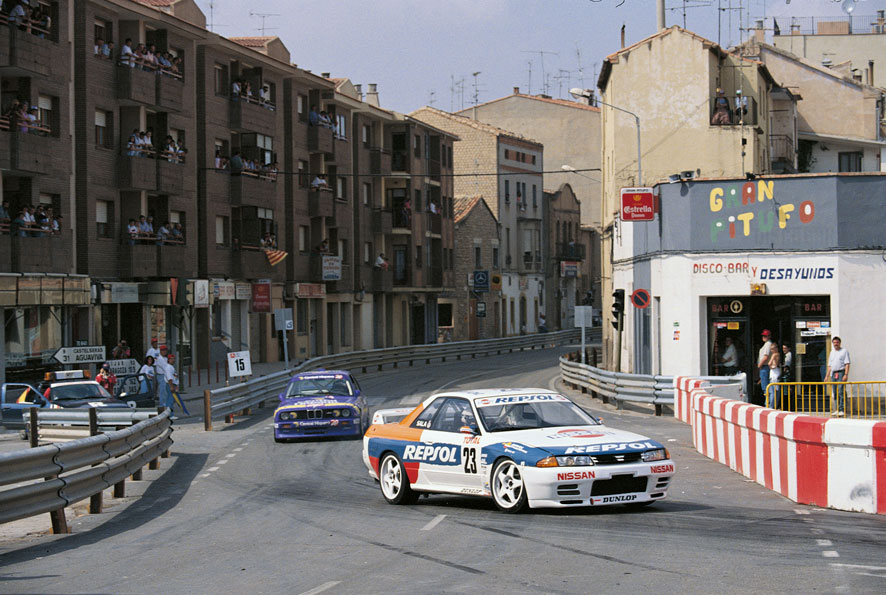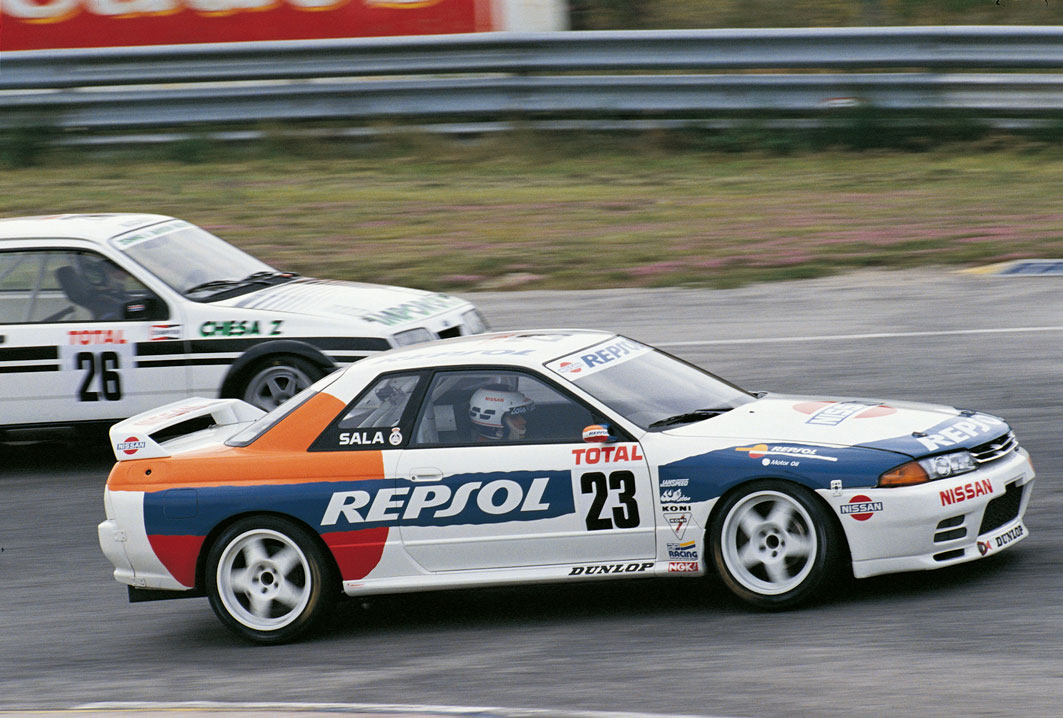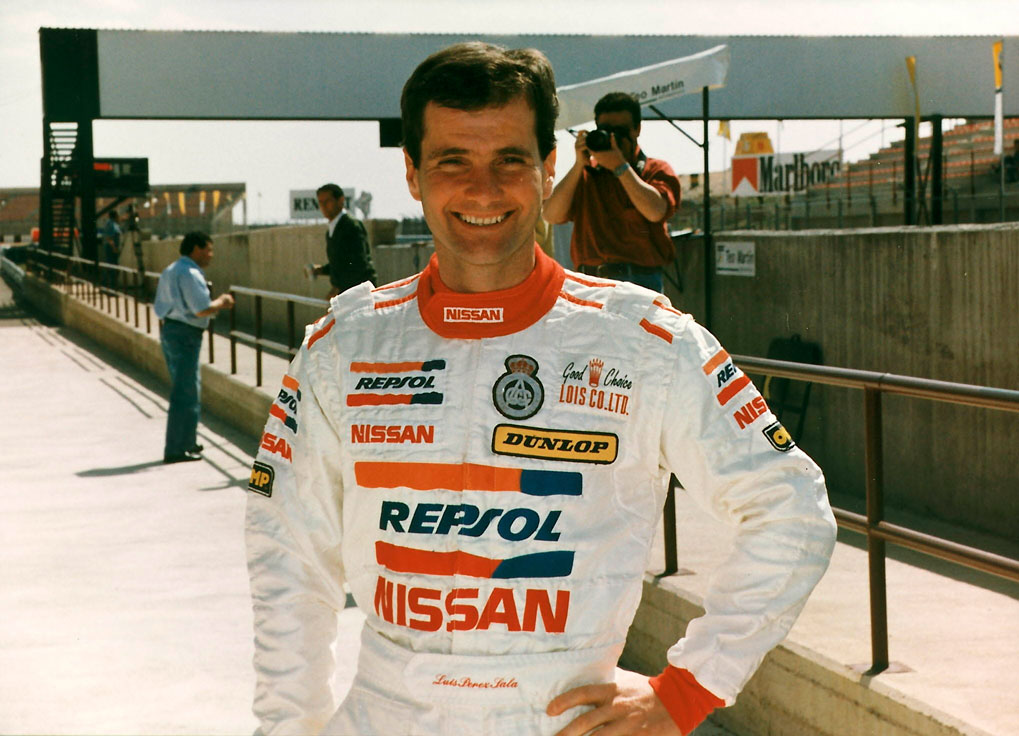The Nissan Skyline GT-R is undoubtedly one of the most iconic and beloved historic cars. This model, originally from Japan, represented Repsol in the Touring Car Championship in 1992 and 1993, winning the title in the latter.
Why is the Nissan Skyline a legendary car?
It all started in 1957 when the brand Prince launched the Skyline model. It was a rear-wheel drive car, equipped with a 1.5-litre, four-cylinder engine and 59 hp. This car would be the cornerstone on which the legend of the Nissan Skyline would be built.
In 1964 the GT version was launched, which had a six-cylinder, 2-litre engine and between 104 and 123 hp depending on the model. This vehicle surprised us at the Fuji GP, where it was driven in the GT-II race. The competition Skyline GT was remarkably different from its street version, with an increased power of 160 hp and a weight of less than a tonne.
The results were immediate; in its debut, the Skyline, driven by Tetsu Ikuzawa, managed to take the leading position at times, surprising the public and the rest of the competitors. Despite the fact that it did not get a victory, which was taken home by the Porsche 904 GTS, the Skyline’s great capability was evident.


Prince was bought out by Nissan in 1966, who saw the Skyline’s potential and created a new version of the car in 1968: the third generation or the C10. In February 1969, just when Repsol had taken the step into competition, the first GT-R was created.
The Skyline 2000GT-R was a four-door saloon with the GT-R emblem on its grill, behind which there was an S20 engine developed using a competition prototype. This model’s engine had six in-line cylinders, 24 valves, and a displacement of 1989 cc. This engine was developed with elements such as fuel injection, reaching up to 230 hp and 8400 rpm.
The GT-R’s debut was the beginning of a triumphant era. Just three months after its launch, it won the TS-b race in Fuji and continued to demonstrate its potential with more than 50 victories, 49 in a row (the official team won 29). Finally, Nissan withdrew from the competition in 1972, but the KPGC10 coupé version emerged during this time. This vehicle, also known as “Hakosuka” (Hako means “box” and Suka is a Japanese abbreviation for “Skyline”), has become a cult classic that is highly sought after by collectors.


The legend returns, the Skyline R32 GT-R
In 1973, manufacturing of the GT-R was cancelled and the world had to wait more than a decade and a half to meet the new Skyline R32 GT-R Nissan continued to develop the model and bring out new versions, some of which triumphed in competition, prompting the desire to resurrect the legend of this mythical car.
In May 1989, the eighth generation of the Nissan Skyline — the R32 — was unveiled, and three months later the new GT-R, with technological and mechanical elements of the highest order, made an appearance. It unquestionably ruled the circuits, and the engineers who designed it did so with that in mind. This was the model that, together with Luis Perez Sala, would conquer the Spanish Touring Car Championship in 1993.


One of the most significant innovations of the R32 was the ATTESA E-TS system (advanced total traction engineering system for all-terrain with electronic torque split. What a mouthful!). This system was able to deliver the torque to all four wheels thanks to an electronic system that measured the speed of the wheels and the lateral and longitudinal accelerations of the car 10 times every second. The sensors were not as advanced as those found in the Honda RC213V, but they were revolutionary at the time. Under normal conditions, the transmission sent 100% of the torque to the rear axle, but it could send up to 50% to the front axle to compensate when needed.
Other key systems were the HICAS four-wheel steering (high capacity actively controlled steering) and multi-link suspension on all wheels. All these additions meant the car weighed over 1400 kg, but also made it grip the road like no other.
To compensate for the weight gain, Nissan created an engine especially for this car. The RB26DETT, a 2.6-litre DOHC in-line engine with twin-turbo that delivered 280 hp and 350 nm of torque. The capacity of this engine frequently exceeded the maximum power attributed to it, without taking into account the improvements that could be made to increase its performance.


The result was a car that took curves spectacularly and accelerated from 0 to 100 in a staggering five and a half seconds. With such capabilities, it is not surprising that the new GT-R became the “king of the track” and the road.
The Skyline R32 GT-R won four consecutive Japanese Touring Car Championships from 1990 to 1993, dominating the 29 races held there and many other international events, while also setting time records on multiple tracks, such as the Nürburgring Nordschleife. This incredible record earned it the nickname “Godzilla”, a huge powerhouse that dominated any challenge in its path.


Over the years there have been commemorative editions that have further improved performance, and also new generations of the Skyline. Repsol’s vehicle achieved five victories and another nine podiums during the time it represented us and conquered the Spanish Touring Car Championship.
In 2019, the Nissan GT-R celebrates its 50th anniversary, exactly the same number of years Repsol has been in the competition.


 Join Us
Join Us  Join Us
Join Us 